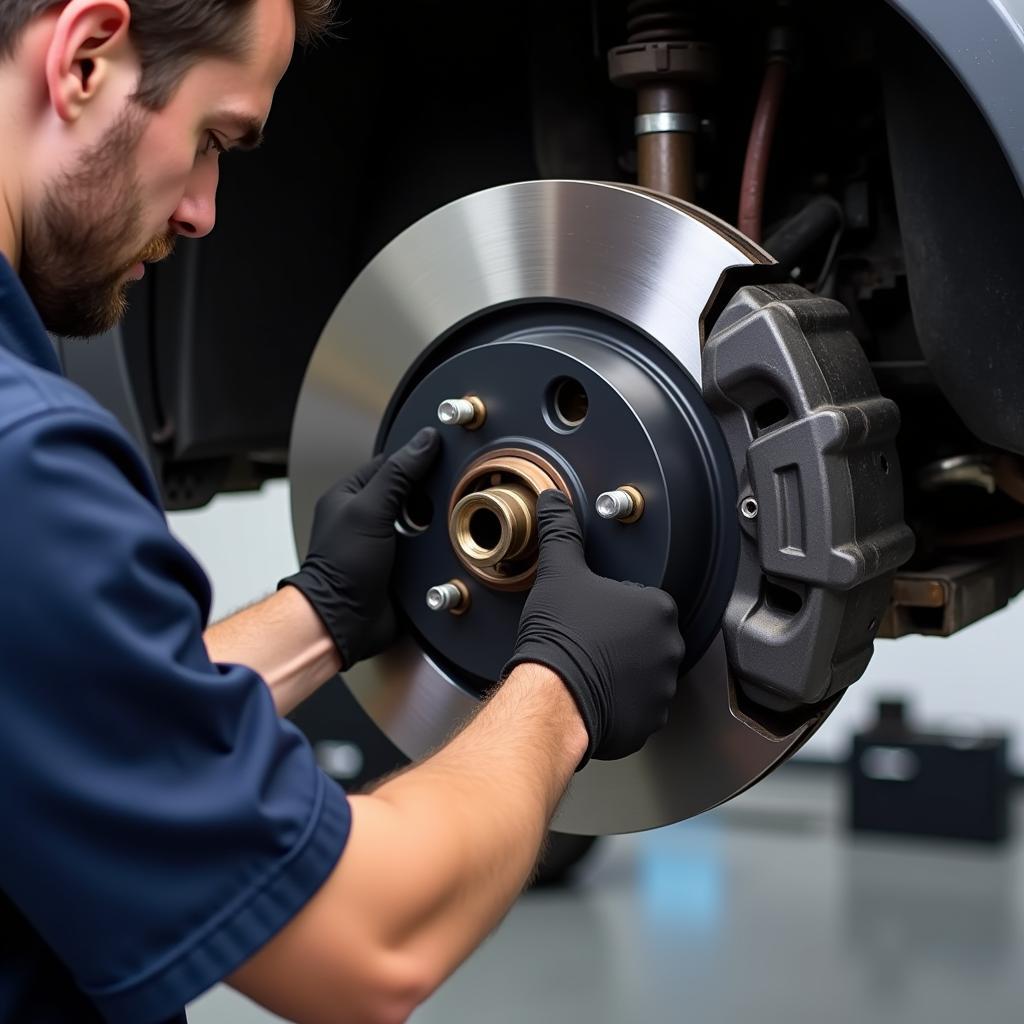Car Brake Drum Problems can range from annoying squeals to serious safety hazards. Understanding the common issues, their causes, and how to address them is crucial for maintaining a safe and reliable vehicle. This guide provides a deep dive into the world of brake drums, offering practical advice for car owners, mechanics, and automotive technicians alike.
Understanding the Brake Drum System
Brake drums are a critical part of your vehicle’s braking system, especially on the rear wheels of many older vehicles and some newer trucks and SUVs. They work in conjunction with brake shoes, wheel cylinders, and other components to slow and stop your car. Inside the drum, brake shoes press against the drum’s inner surface, creating friction and slowing the wheel’s rotation. This friction generates heat, so proper ventilation and maintenance are essential. If you’re experiencing issues like car brake pedal problems, the brake drums might be a contributing factor.
Common Car Brake Drum Problems
Several issues can arise with brake drums, each with its own set of symptoms and solutions. Let’s explore some of the most common problems:
-
Squealing or Grinding Noises: One of the most noticeable signs of trouble is a high-pitched squeal or grinding noise when braking. This often indicates worn brake shoes, but it can also stem from other issues like a lack of lubrication or a foreign object trapped inside the drum.
-
Reduced Braking Performance: If your car takes longer to stop than usual, or if you feel a pulsating sensation in the brake pedal, it could be a sign of worn drums, shoes, or a problem with the hydraulic system. Don’t hesitate to check for car break problem resources if you notice this.
-
Overheating: Excessive heat can warp the drums, leading to uneven braking and reduced performance. Overheating can be caused by riding the brakes, faulty wheel cylinders, or even driving conditions like frequent downhill driving.
-
Drum Scoring or Grooving: The inner surface of the drum can become scored or grooved over time due to wear and tear or the presence of abrasive materials. This can cause reduced braking efficiency and premature wear of brake shoes.
-
Leaking Wheel Cylinder: The wheel cylinder is responsible for pushing the brake shoes against the drum. A leak in the wheel cylinder can lead to a loss of brake fluid and compromised braking performance.
Diagnosing Car Brake Drum Problems
Proper diagnosis is crucial to effectively addressing brake drum issues. Here’s a step-by-step guide to help you pinpoint the problem:
-
Visual Inspection: Remove the wheel and drum to visually inspect the components. Look for signs of wear, damage, or leaks.
-
Measure Drum Thickness: Use a micrometer to measure the drum thickness. If it exceeds the manufacturer’s specifications, the drum needs to be replaced.
-
Check Brake Shoes: Examine the brake shoes for wear, cracks, or glazing. Measure the lining thickness and replace them if necessary.
-
Inspect Wheel Cylinder: Check for leaks or signs of damage. If the wheel cylinder is leaking, it needs to be replaced or rebuilt.
-
Check Hardware: Inspect all springs, adjusters, and other hardware for damage or wear. Replace any faulty components. For more in-depth analysis, consider resources like how do car shops analyze brake problems.
“Regular inspection and maintenance are key to preventing major brake drum problems,” says automotive expert, Robert Johnson, ASE Master Technician. “Catching issues early can save you time, money, and ensure your safety on the road.”
Repairing Car Brake Drum Problems
Depending on the specific problem, repairs can range from simple adjustments to complete component replacements. Always consult a qualified mechanic if you are unsure about any repair procedure. Problems with other car systems, like those detailed in problems with the motor car no 9 design, can sometimes manifest as brake issues, so a thorough diagnosis is vital.
 Mechanic Inspecting Brake Drum
Mechanic Inspecting Brake Drum
Conclusion
Car brake drum problems can significantly impact your vehicle’s safety and performance. Understanding the common issues, their causes, and how to address them is essential for every car owner and technician. By following the guidelines in this article, you can effectively diagnose and repair car brake drum problems, ensuring a safe and reliable driving experience. For personalized assistance or further questions, don’t hesitate to contact AutoTipPro at +1 (641) 206-8880 or visit our office at 500 N St Mary’s St, San Antonio, TX 78205, United States. If you haven’t driven your car for a while, you might want to check out this article on problems if car not driven for 6 months.




Leave a Reply